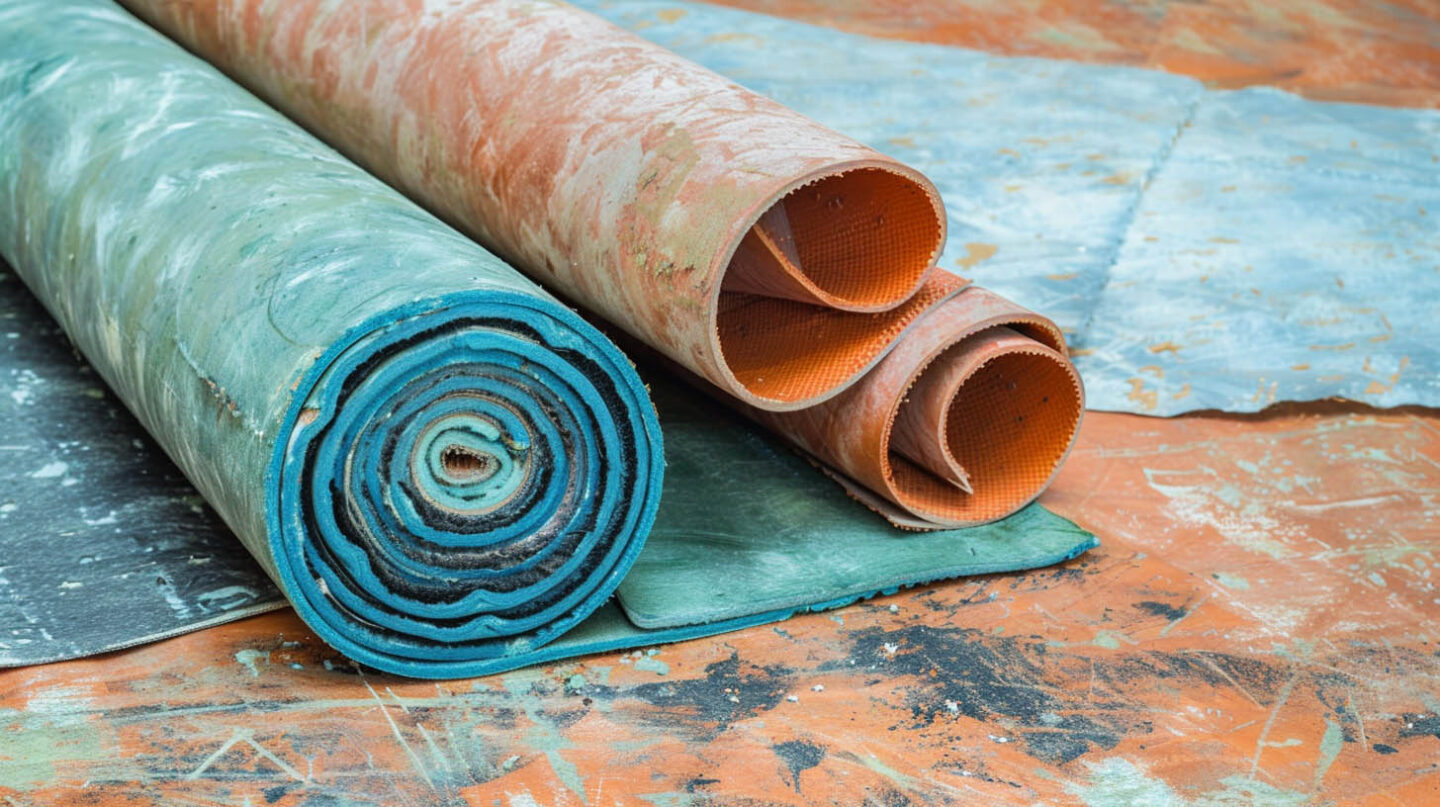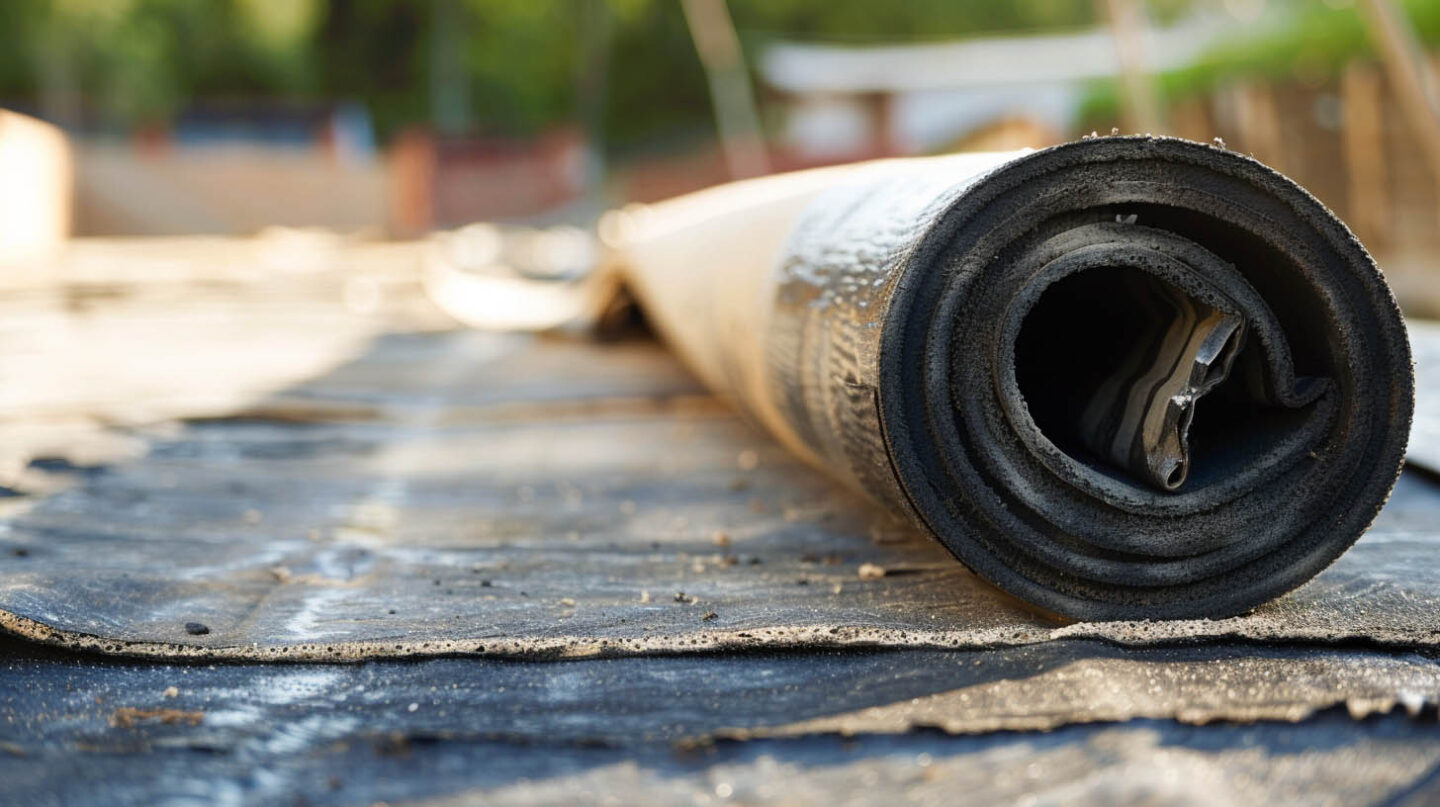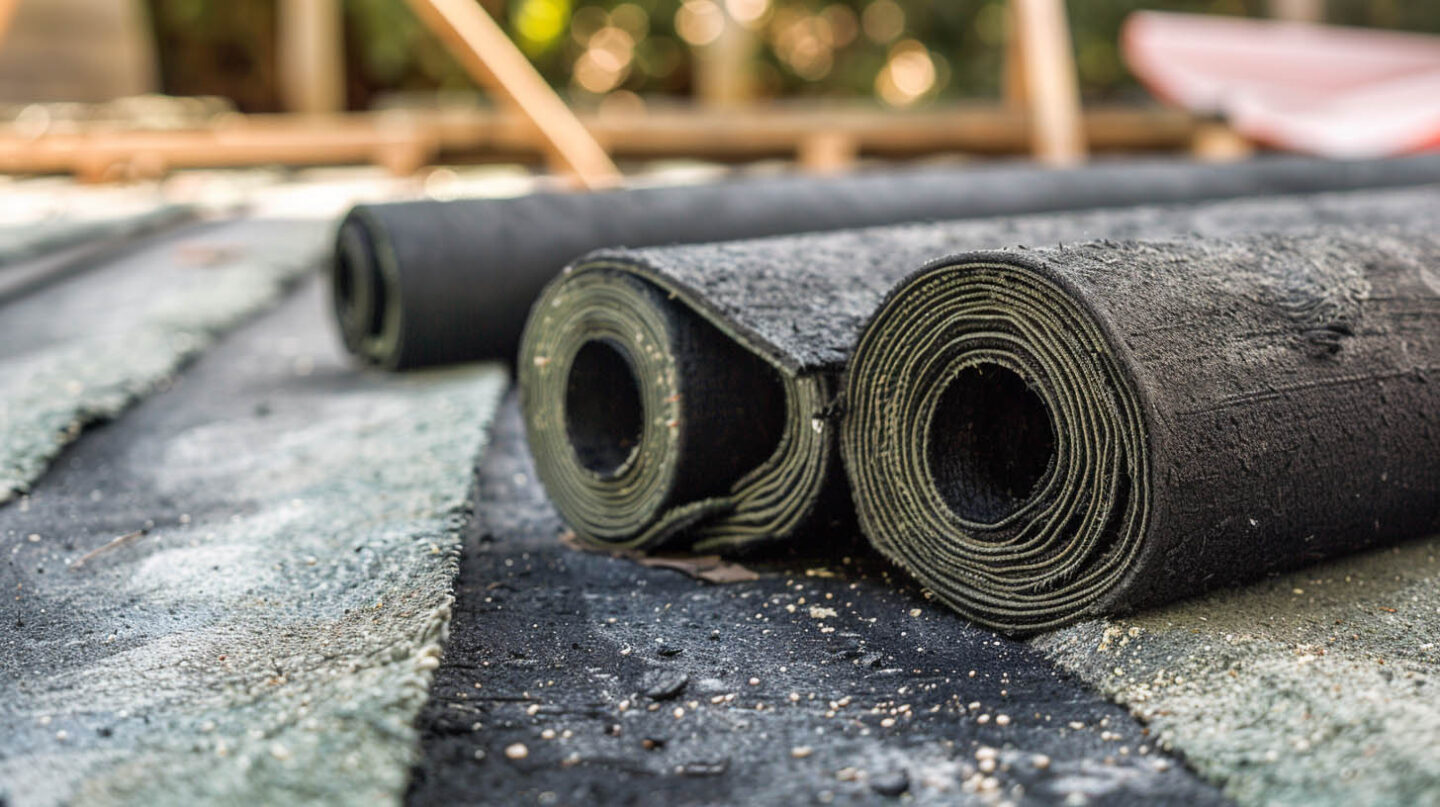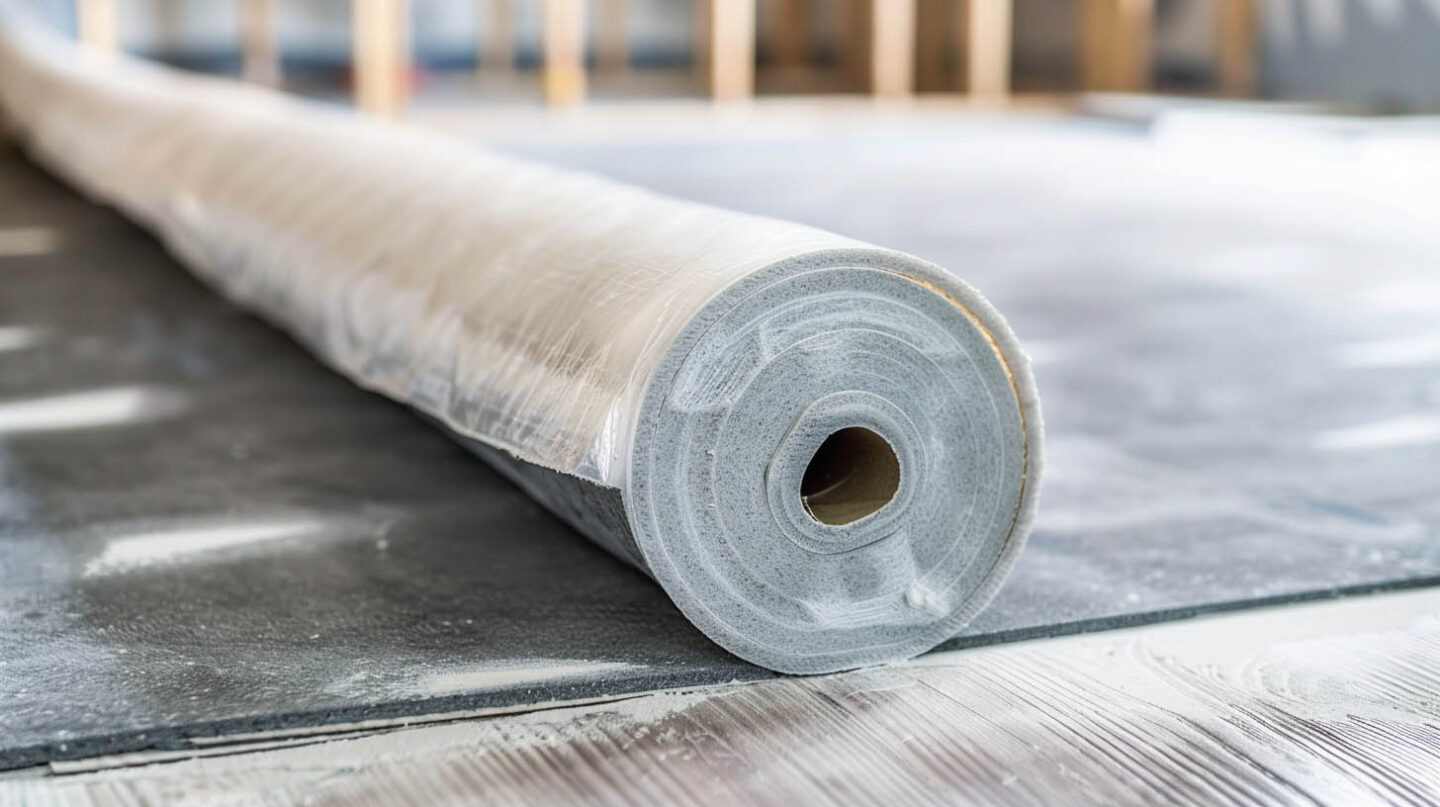Picking the right roofing materials is one of the most important choices you make as a homeowner in Raleigh, NC. Here, where the weather is often humid, the layer of protection under your shingles matters a lot. This underlayment is hidden, but it works as your first shield against moisture. At The Shingle Master, we understand that you can pick from two main options, felt or synthetic underlayment, and each one gives different levels of protection. Our expert team is dedicated to helping you choose the right layer of protection for your roofing system so your home stays safe and the roof lasts longer.
What is Synthetic Underlayment?
Synthetic underlayment is a modern part of the roofing system. It is made with synthetic materials, such as woven polypropylene or polyethylene. This makes it strong and able to keep water out.
This type of underlayment is not like the old ones. It has been made to fix problems you find with traditional materials. It offers better strength and stays tough, which is good for places with high humidity, like North Carolina.
Features and Construction of Synthetic Underlayment
Synthetic products are designed with advanced synthetic materials that offer superior moisture resistance and durability. Constructed to reduce the risk of structural decay, these underlayments create an effective protective barrier against harsh weather conditions, such as heavy rainfall and UV exposure. Their ease of installation is enhanced by smaller rolls that facilitate handling, making the roofing process smoother. Additionally, the lightweight construction contributes to better traction, reducing the risk of accidents during the installation process, providing peace of mind for roofing contractors and homeowners alike.

Advantages and Disadvantages in Humid Environments
In humid environments, synthetic products offer superior moisture resistance, creating a robust protective barrier against heavy rainfall. Their durability and ease of installation can enhance the roofing system’s structural integrity, providing peace of mind through manufacturer warranties. However, a higher upfront cost may deter some homeowners. Conversely, traditional felt underlayment, made from organic materials, may absorb moisture, leading to potential structural decay over time. Weighing these factors is essential for choosing the right underlayment that aligns with specific roofing needs.
Understanding Roof Underlayment in Humid Climates
A protective layer beneath roofing materials is essential, especially in humid climates. Proper underlayment acts as a moisture barrier, safeguarding the roof deck against water infiltration and reducing the likelihood of structural decay. In regions like Raleigh, NC, where heavy rainfall and elevated humidity are common, choosing the right underlayment is crucial for maintaining the roof’s structural integrity. Additionally, understanding local building codes can inform decisions, ensuring the selected meets requirements while providing peace of mind against harsh weather conditions.
The Importance of Underlayment for Moisture Protection
A robust layer of underlayment is crucial for enhancing moisture protection in roofing systems, especially in humid climates. By creating a protective barrier, this material prevents water infiltration that could lead to structural decay. With the right underlayment, such as synthetic options or traditional felt, homeowners can safeguard their roofs against heavy rainfall and extreme weather patterns. Proper installation ensures the roof’s structural integrity while providing peace of mind regarding manufacturer warranties and maintenance needs for years to come.

Common Challenges in High-Humidity Regions Like Raleigh, NC
High-humidity regions present unique challenges for roofing projects, particularly in cities like Raleigh, NC. Excess moisture can significantly impact the effectiveness of underlayment materials, leading to structural decay and compromised roofing systems. Additionally, heavy rainfall coupled with organic materials in traditional felt underlayment may increase the risk of mold and mildew, necessitating careful selection of synthetic options with superior moisture resistance. Proper installation is paramount to ensure a reliable protective barrier, enhancing long-term durability and maintaining structural integrity.
What is Felt Underlayment?
Felt underlayment is a traditional roofing material made from cellulose or fiberglass, saturated with asphalt. It serves as a moisture barrier and provides added protection against weather extremes. Its cost-effectiveness makes it a popular choice, though it may not perform as well in high-humidity environments.
How Felt Underlayment Works
Felt underlayment functions as a protective barrier installed under roofing materials, often made of organic materials like wood cellulose or asphalt felt. This layer absorbs moisture, preventing it from infiltrating the roof deck while allowing vapor to escape, thus promoting better moisture resistance. Its ability to shield against harsh weather conditions, such as heavy rainfall or UV exposure, enhances the roofing system’s overall durability. Although it offers adequate protection, its composition can lead to structural decay over time, requiring careful installation and maintenance.

Pros and Cons of Felt Underlayment in Humid Areas
While a traditional choice, presents a mix of advantages and disadvantages in humid environments. Its organic materials provide a certain level of water resistance, yet they may struggle against excessive moisture, leading to structural decay over time. Installation is straightforward, often resulting in lower labor costs. However, the risk of accidents increases when handling larger rolls. Additionally, the initial investment might be lower than synthetic products, but long-term performance under harsh weather conditions can affect warranty coverage and maintenance needs.
In Summary
In humid climates, selecting the appropriate underlayment is crucial for preserving a roof’s structural integrity. Both synthetic and felt offer distinct benefits and challenges, influenced by moisture resistance and durability against harsh weather conditions. The right choice not only enhances the longevity of the roofing system but also provides peace of mind regarding maintenance needs and warranty coverage. Ultimately, consulting with experienced roofing specialists ensures that the best underlayment option aligns with specific environmental conditions and project requirements.
Frequently Asked Questions
What do roofing professionals recommend for underlayment in humid environments?
Roofing professionals typically recommend synthetic underlayment in humid climates due to its superior moisture resistance, lightweight construction, and longer lifespan. While felt underlayment is less expensive, it may trap moisture and degrade faster, making synthetic a more reliable choice for humidity-prone areas.
What are the disadvantages of synthetic roofing underlayment?
While synthetic roofing underlayment offers durability, its disadvantages include higher initial costs and potential UV degradation if exposed for extended periods before installation. Additionally, it may not perform as well in extreme temperature fluctuations compared to traditional felt options.
Is roofing felt a moisture barrier?
Roofing felt acts as a moisture barrier to some extent, but its effectiveness decreases in humid climates. While it provides a level of protection against water infiltration, it may not perform as well as synthetic underlayment, which offers superior moisture resistance in such environments.
Read our blog: Reading an Adjuster’s Scope of Loss: Homeowner Walkthrough


